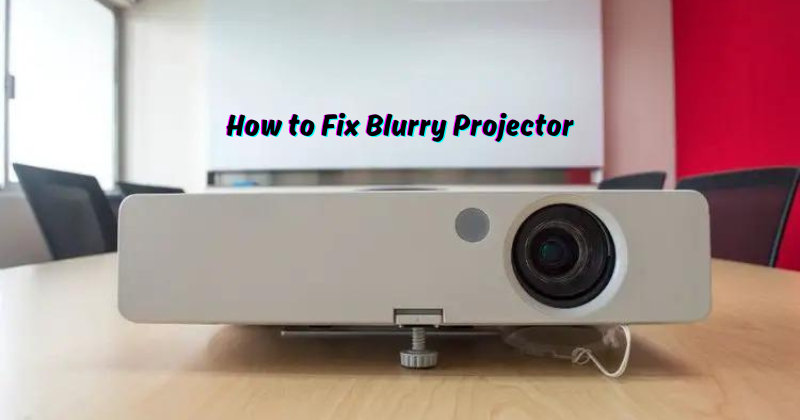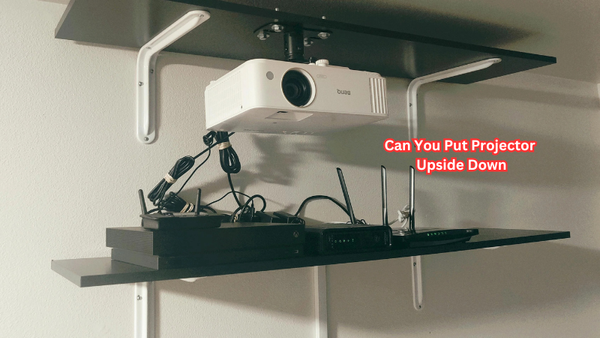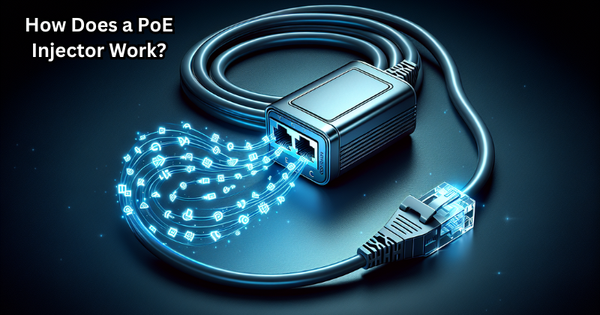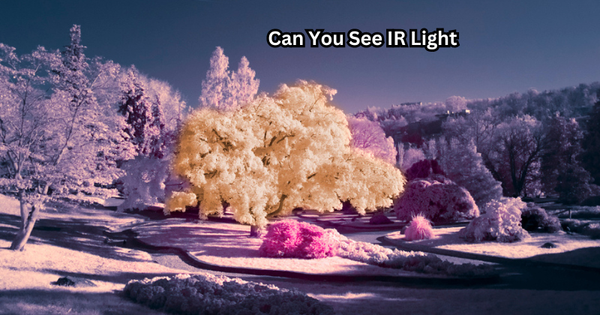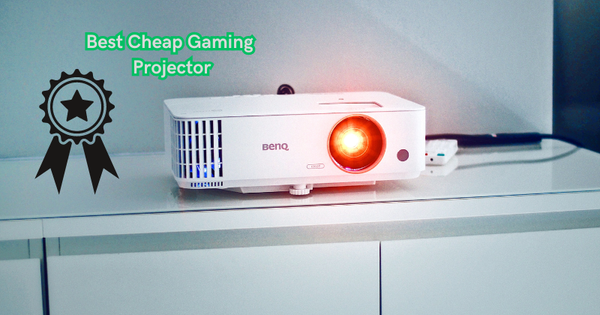Introducing a clear pathway to crisp visuals and addressing a blurry projector demands a systematic approach to restore visual precision. Blurriness can stem from various issues, ranging from improper focus settings to lens cleanliness or signal irregularities.
In this guide, we'll navigate through practical steps to troubleshoot and rectify projector blurriness, ensuring your presentations, movies, or educational content are displayed with optimal clarity. By understanding and addressing the root causes behind a blurry projection, you can enhance the viewing experience and maximize your projector's capabilities.
Let's delve into the essential techniques to bring sharpness back to your presentations and projections.
How to Fix Blurry Projector: Troubleshooting Steps
We will outline the steps to identify and rectify a blurry projector. These techniques are simple and easy to follow, making them suitable for both beginners and experienced users.
Check the Focus Settings:
The first step in dealing with a blurry projector is ensuring the focus settings are correct. Many projectors come with manual focus adjustments, while others have automatic options.
If your projector has manual focus, adjust the focus ring or knob until the image becomes clear and sharp. Making small, incremental adjustments and checking the image after each one is essential. Once you have achieved a crisp projection, lock the focus settings. And also adjust the sharpness setting to improve image quality.
For projectors with automatic focus, activate the feature and wait for it to calibrate. If there is still blurriness present, manually adjust the focus for fine-tuning.
Bumpy Surface:
Another factor that may contribute to a blurry projection is an uneven surface. If your projector is placed on an unstable or rough surface, it can cause vibrations and distort the image. To avoid this issue, make sure to place your projector on a stable and flat surface. You can also use a tripod or mount to ensure stability. Because projection surface can vary, it's good practice to test the projection on different surfaces and adjust accordingly.
Clean the Lens:
Another common cause of blurry projectors is a dirty lens. Dust, fingerprints, and smudges can all contribute to blurriness in the projected image. To address this, use a soft, lint-free cloth to gently wipe the lens and remove any dirt or marks.
Be careful not to press too hard, as this could damage the lens. It's also essential to regularly clean the lens to prevent any build-up that could affect the clarity of your projections.
Adjusting Keystone Correction:
Sometimes, a blurry image can be caused by the projector being tilted at an angle, resulting in a distorted image. To rectify this, most projectors come with keystone correction options that allow you to adjust the projection to fit the screen correctly.
Projector screen manufacturers also often recommend a specific angle or distance for optimal viewing, so it's essential to check this as well. Look for these settings in your projector's menu and make small adjustments until the image becomes clear.
Misalignment And Smoked Lens:
If you have checked all the previous steps and are still experiencing blurriness, it may be due to misalignment or a smoked lens. Also, check resolution settings; if the resolution is set incorrectly, it can cause blurriness in the projection.
To fix misalignment and smoked lens issues, it's best to seek professional help from a technician who can realign or replace the affected parts.
Check Connections:
If none of the above steps have resolved the blurriness issue, it could be due to irregularities in the signal or connection between your projector and the input device. Ensure that all cables are securely connected, and try using a different cable if possible. You can also check for any software updates for your projector or input device that may address compatibility issues.
While fixing an image problem can seem like a daunting task, following these simple steps can help you troubleshoot and fix the issue with ease. By making sure that your projector is placed on a stable surface, adjusting focus projector settings, cleaning the lens, and checking connections, you can ensure crystal clear projections with great image sharpness.
Advanced Solutions For Persistent Blurriness
If the above steps have not resolved the blurry projection, then there may be more complex underlying issues that require advanced solutions. It's best to seek assistance from a professional technician who can diagnose and fix these problems. You can try the following steps:
Adjust Projection Distance:
Different projectors have different projection distances, and if the projector is placed outside of its optimum distance range, it can result in blurriness. Refer to your projector's manual for the recommended projection distance and adjust accordingly.
Firmware And Software Updates:
Regularly updating your projector's firmware and software can address any bugs or compatibility issues that may be causing blurriness. Fuzzy images can also be caused by outdated drivers, so make sure to update your projector's software and firmware regularly. Check for updates on the manufacturer's website or through the projector's menu settings.
Reset To Factory Settings:
If you have made changes to various settings on your projector, there may be a chance that they have affected the projection quality. In such cases, resetting your projector to its factory settings can help restore sharpness and clarity.
Replace The Bulb:
If your projector has been in use for an extended period, it may be time to replace the bulb. Over time, bulbs lose their brightness and can cause blurriness in the projected image. If you replace bad quality bulb its also decreased image quality. Refer to your projector's manual for instructions on how to replace the bulb, or seek professional help.
Upgrade Your Projector:
If all else fails, it may be time to consider upgrading your projector. Technology constantly evolves, and newer models offer improved resolution and features that can eliminate blurriness and provide a better viewing experience.
With these troubleshooting steps and advanced solutions, you can now confidently fix any blurry projections and make the most out of your projector. Remember to clean and maintain your equipment regularly for optimal performance, and seek professional assistance if needed.
Preventing Tips from Blurriness In The Future:
While it's common for projectors to experience screen blurry problem, there are several steps you can take to prevent this issue in the future.
Make sure to clean the lens regularly and avoid touching it with your fingers, as oils from your skin can leave streaks that affect image quality. Keep your projector in a dust-free environment and avoid placing it on shaky or uneven surfaces. Another helpful tip is regularly checking for any software updates for your projector and input device. Keeping your equipment updated can prevent any compatibility issues that may cause blurriness.
By taking these preventative measures, you can ensure that your projector consistently provides clear and sharp images, making for an enjoyable viewing experience every time. With proper maintenance and troubleshooting techniques, you can easily resolve any blurriness issues with your projector and achieve stunning projections for all your presentations, movies, or events. So confidently set up your projector, knowing you have the skills to address any potential blurriness.
FAQs
What makes a projector more clear?
A projector's image clarity depends on various factors such as resolution, brightness, lens quality, and proper maintenance. Always check for the recommended settings, and clean the lens regularly for optimal performance. To avoid projector blurry, make sure to keep it within its recommended projection distance and avoid shaky surfaces.
Why is my projected image blurry?
A blurry image can be caused by various reasons, such as improper focus settings, a dirty lens, misalignment or smoked lens, incorrect resolution settings, or irregular signal or connection between your projector and input device. Blurry projector image can also be due to advanced issues such as outdated firmware or a need for bulb replacement. Update your firmware and correct setting you would not get blurry images.
Is projector quality better on the wall or screen?
The quality of projections can vary depending on the surface used, but generally, a high-quality projector will produce clear and sharp images regardless of the surface. However, a screen specifically designed for projection can often produce better image quality. So, it's recommended to use a proper projection screen for optimal results.
Do projectors lose quality?
Yes, projectors can lose their brightness and image quality over time due to wear and tear. It's essential to regularly clean and maintain your projector and replace any worn-out parts or bulbs as needed for optimal performance. Technology is constantly evolving, and newer models may offer enhanced resolution and features for improved image quality.
Conclusion
In conclusion, fixing a blurry projector is a relatively simple process that greatly enhances your viewing or presentation experience. By ensuring the focus adjustment is set correctly on the projector lens, you can eliminate blurriness and achieve sharp images.
Checking and adjusting the resolution settings to match the input source is crucial in improving clarity. Cleaning the lens regularly and removing dust or smudges is another effective way to restore image quality. Lastly, optimizing the positioning and distance between the projector and the screen can significantly reduce blurriness.
Remember, a little attention to detail and some minor adjustments can go a long way in enhancing your projector's performance. So, next time you encounter a blurry image, don't fret – follow these steps, and you'll be enjoying crystal-clear visuals in no time!
